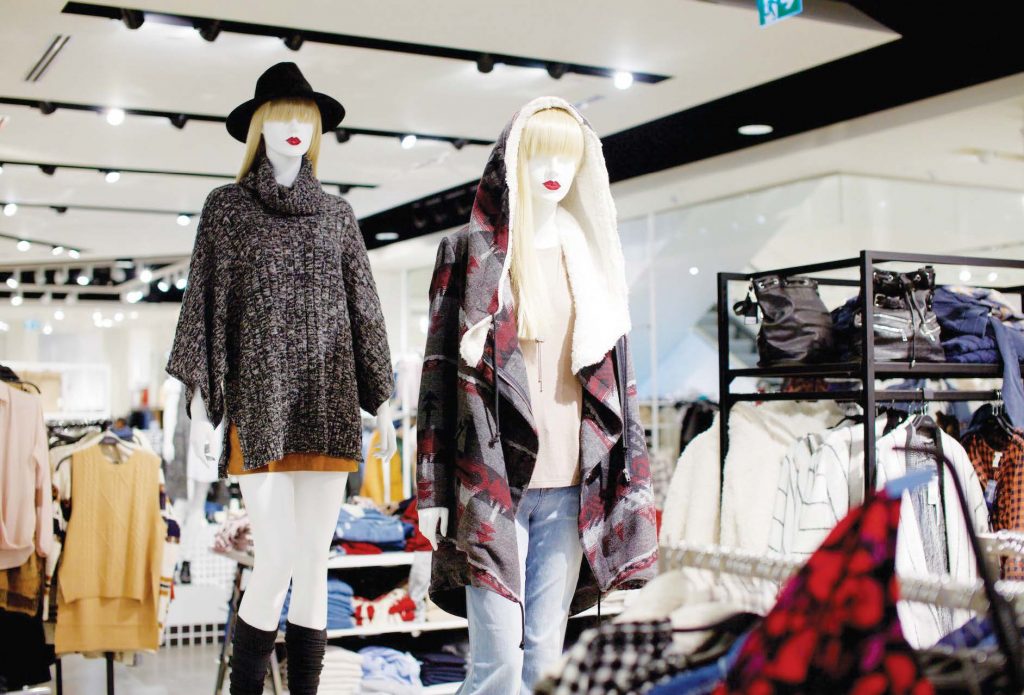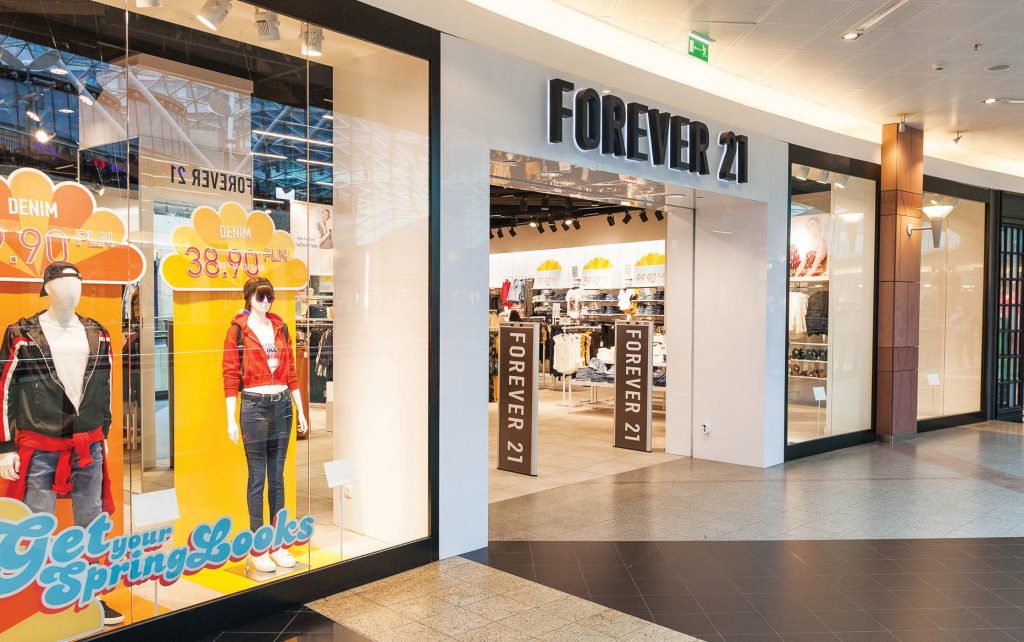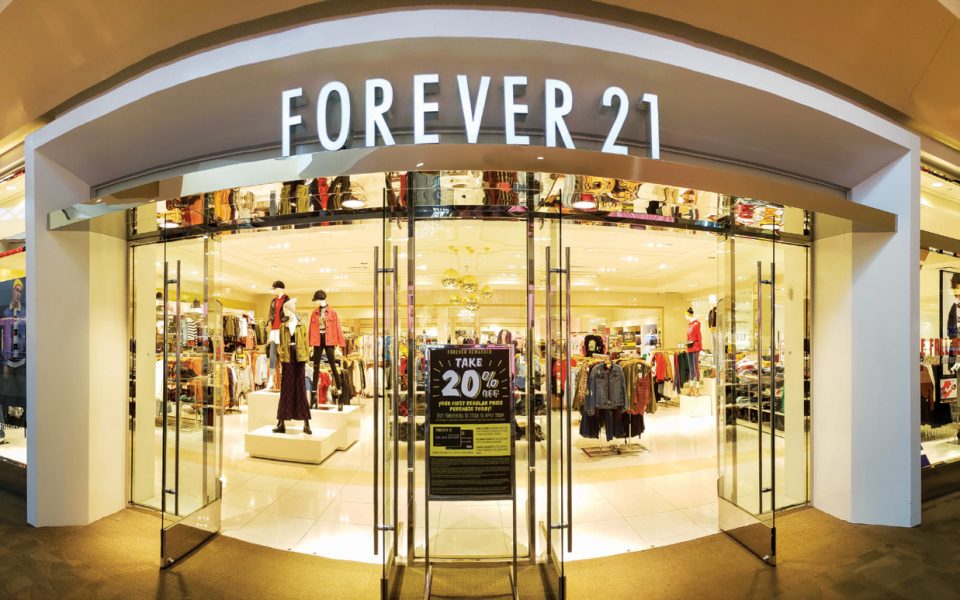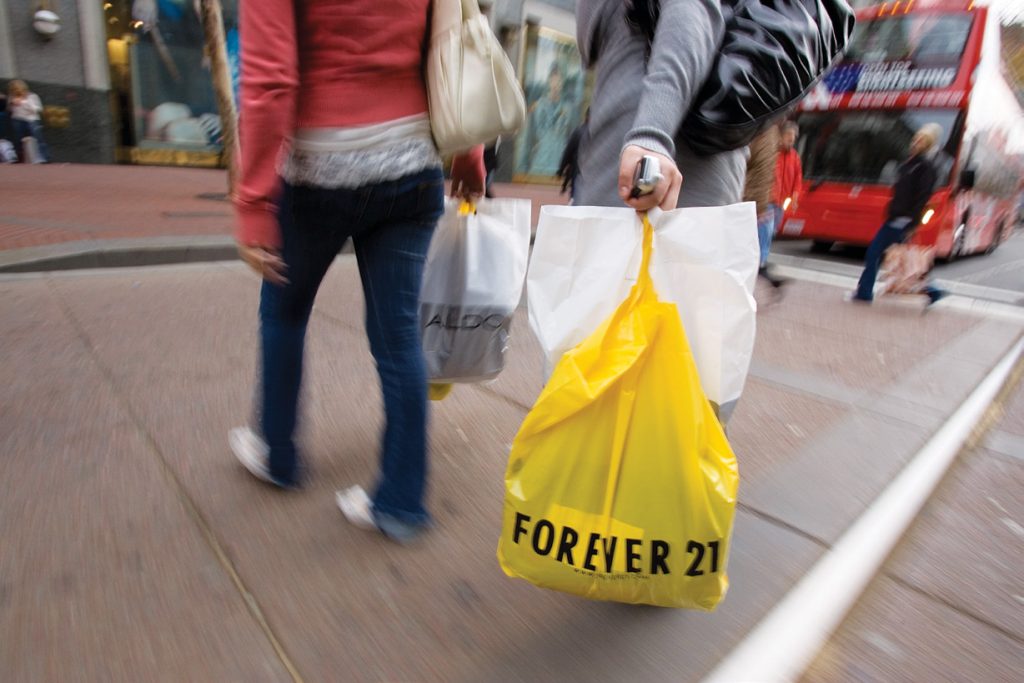The fashion retail chains that helped popularize so-called fast fashion in the past decade are going through such rapid makeovers to cope up with the recent market conditions. The establishment for years had teens’ attention at their stores for its speedy take on fashion selling things such as $5 shimmery halter tops and $25 dresses. However, the once retail giant, Forever 21 is preparing for bankruptcy. According to the close source of the company, the retailer has been working with a team of advisers to help it restructure its debt and has been in talks for additional financing.
Forever 21 was founded in 1984 and, along with other fast-fashion chains like H&M and Zara, rode a wave of popularity among young customers that took off in the mid-1990s. It even stole customers from traditional stalwarts like Abercrombie & Fitch and American Eagle. The Los Angeles-based privately held chain has moreover not seen any probable success in the negotiations with possible lenders. Now the shopping mall staple is considering securing a potential debtor-in-possession loan to take the company into Chapter 11.
Due to the shift in market, catering only fast fashion as assumable has bitten the company. The generation Z is driving the market tide towards economical and ecological sustainability. Steering the wheel in the right direction, brands like Zara, H&M grabbed the market by introducing eco-friendly sustainable options instead of the famous fast fashion.
Back in the day, Forever 21 embodied the American dream: In 1981, Jin Sook and Do Won “Don” Chang moved to Los Angeles from South Korea with no money, no college degrees, and speaking little English. To make ends meet, Jin Sook worked as a hairdresser while Don worked as a janitor, pumped gas, and served coffee.
Until he noticed that “the people who drove the nicest cars were all in the garment business.” So three years later, with $11,000 in savings, Changs opened a 900-square-foot clothing store called Fashion 21. The couple took advantage of wholesale closeouts to buy merchandise from manufacturers at a discount. The store made $700,000 in sales its first year.
Fashion 21 was initially only popular with LA’s Korean American community. But the Changs leveraged their success, opening new stores every six months, which broadened the company’s customer base at the same time. They also changed the name to Forever 21 to emphasize the idea that it was “for anyone who wants to be trendy, fresh and young in spirit.”
Forever 21 became one of the largest tenants of American malls, with 480 locations nationwide. And by 2015, business was booming. Forever 21’s sales peaked, with $4.4 billion in global sales that year. The Chang couple became one of America’s wealthiest couples, with a combined net worth reaching an estimated $5.9 billion in March 2015.
Forever 21’s aimed to become an $8 billion company by 2017 and open 600 new stores in three years. But the company’s aggressive expansion also lead to its downfall.
At its peak, Forever 21 made $4.4 billion in revenue. At present, Forever 21 has filed for bankruptcy and will soon cease operations in 40 countries and close up to 350 stores globally.
The company’s filing for bankruptcy comes as e-commerce continues to rise during a “retail apocalypse” for brick-and-mortar retailers.

As the company focused on growing bigger, its styles became more “cookie-cutter.” As a result, Forever 21 started to lose touch with its core customers, while competitors like H&M and Zara rose. Internet brands like Fashion Nova churn out celebrity- and influencer-inspired styles at a rapid-fire pace.
And as e-commerce has continued to boom, traditional retailers like Forever 21 have struggled to adapt to changing consumer behaviors. According to a March 2019 survey, millennials make 60% of their purchases online and overall prefer online shopping over going to a physical store.
Yet, Forever 21 continued opening new stores as recently as 2016, even expanding existing stores to take over multiple floors with men’s, children’s, and home-goods sections this can explain why Forever 21’s sales are estimated to have dropped by 20% to 25% in 2018.
On top of that, the Chang’s, who still own the company, have lost more than $4 billion from their personal net worths. The company overall is now $500 million in debt and considering filing for bankruptcy.
However, the company is not giving up and this bankruptcy doesn’t necessarily means a complete shut down. Even though, the bankruptcy marks a dramatic fall for the retailer.

Forever 21 has already started downsizing its stores. And as one of the largest tenants of America’s mall’s, a widespread shutdown of Forever 21 could exacerbate what’s already being referred to as the “retail apocalypse,” which has already closed more than 15,000 retailers across the US and could shut down 75,000 more, according to investment firm UBS.
As of the bankruptcy filing, it operated about 800 stores globally, including more than 500 stores in the U.S. The company says it will still operate its e-commerce business, which accounts for 16% of total sales.
“The world has changed, and Forever 21 didn’t change with it,” said Stacey Widlitz, president of SW Retail Advisors. “And the walls closed in, in terms of the competition.” Widlitz and others noted that the chain was also dogged by the deteriorating quality of its clothing.
Although the fast fashion brands need to evolve their strategy and styles with time for the market, fast fashion isn’t dead; it’s just being reinvented. Swedish chain H&M, which has struggled to keep up with competitors, is showing signs of a comeback and is reinventing itself by offering more eco-friendly fashions. The chain, which once set the standard for speed by flying in frequent small batches, is also digitizing certain areas of its manufacturing process.
Primark, which is based in Ireland and owned by Associated British Foods, opened its first location in the U.S. in 2015. Now the fashion chain, which sells $10 jeans and $4 T-shirts, has nine locations in the U.S. and is faring well. It too is focusing more on the environment friendly products and announced last month a dramatic increase in its sustainable cotton program.
Sonia Lapinsky, a managing director in the retail practice at AlixPartners LLP, says a retailer’s success isn’t just about speed. “They need to deliver the right products, the right story and be sustainable, “she said.
Here are three big hurdles for fast-fashion companies like Forever 21:
• NEW ONLINE FAST-FASHION RIVALS
Over the last 10 years or so, a slew of online-only fashion retailers have popped up with names like Fashion Nova, Nasty Gal and Boo Hoo. For example, Boo Ho says it drops more than 100 new products daily. “These sites are curated better and they’re fun,” said Widlitz. They also can afford to have lots of sales since they’re not weighed down by physical stores. Each also dedicates a section on their website to their code of conduct regarding working conditions at factories and their environmental efforts. For example, online fashion site Asos says that this year, cashmere, mohair, feathers, down silk, bone horn and shell will be banned from its websites.
• ECO-FRIENDLY CLOTHING
Young consumers are also looking at digital natives like Allbirds and Everlane that are not fast-fashion sites but offer fashion basics that are easy on the environment. That has forced many traditional retailers including fast-fashion chains to develop products that are made of recycled material or change their manufacturing process.
In fact, H&M says that by 2020 all of its cotton will be sourced in a more sustainable way, meaning recycled, organic or through the Better Cotton Initiative, the largest cotton sustainability program in the world.
This year, H&M launched a new section on its website that details where its products were produced, who the suppliers were, the names and addresses of factories and the number of workers they employ. In addition, customers can find out more about the materials used to make a specific garment and learn how to recycle it.
• THE RISE OF MICRO TRENDS
It used to be that fast-fashion retailers would embrace one big global trend and push it to their stores. Now, they’re contending with lots of micro trends as young shoppers follow influencers on social media.

So retailers like Forever 21 and others need to come up with smaller deliveries of more diverse clothing to cater to different shoppers’ tastes, analysts say. “The cool kid is more likely to get clothes on Etsy than at H&M,” said Jason Goldberg, chief commerce strategy officer at Publicis Communications.





